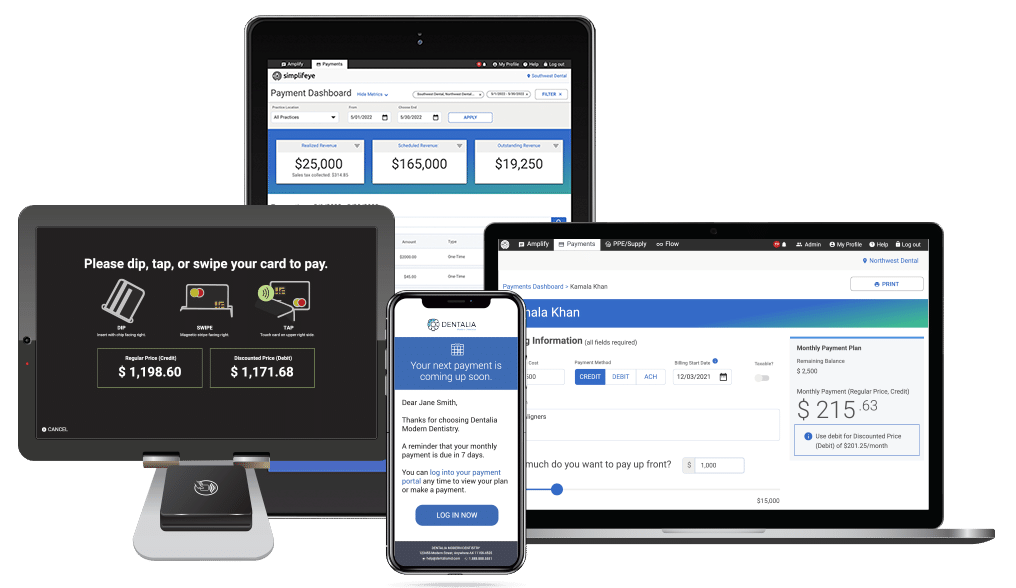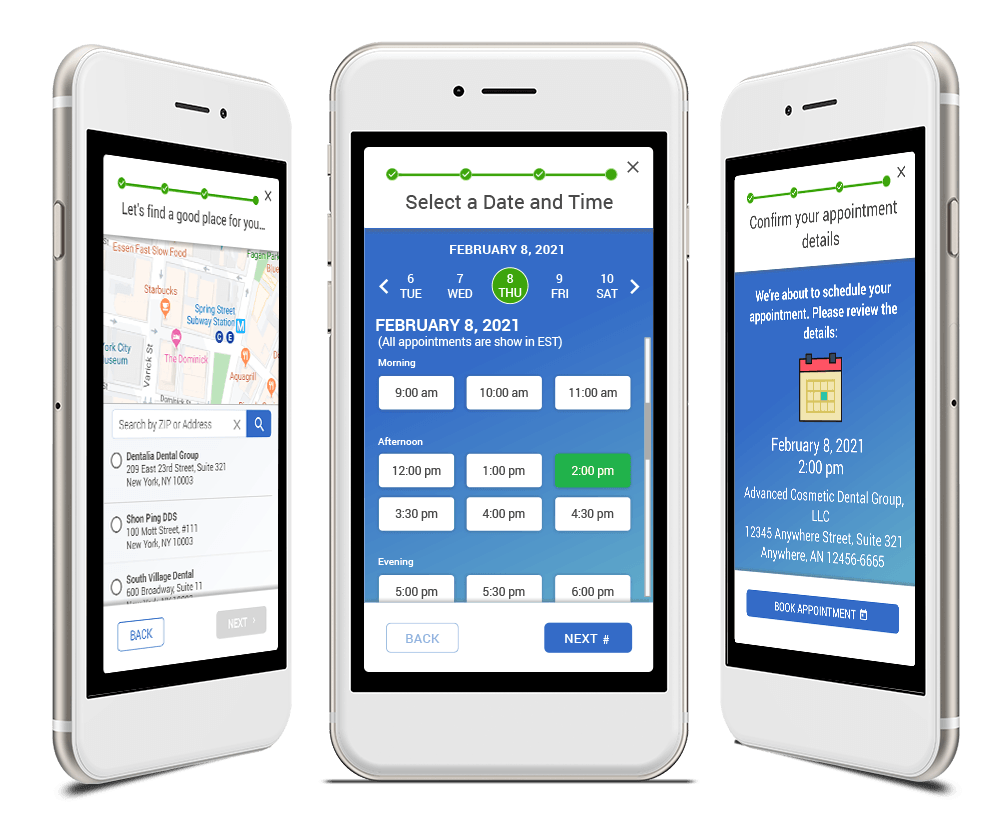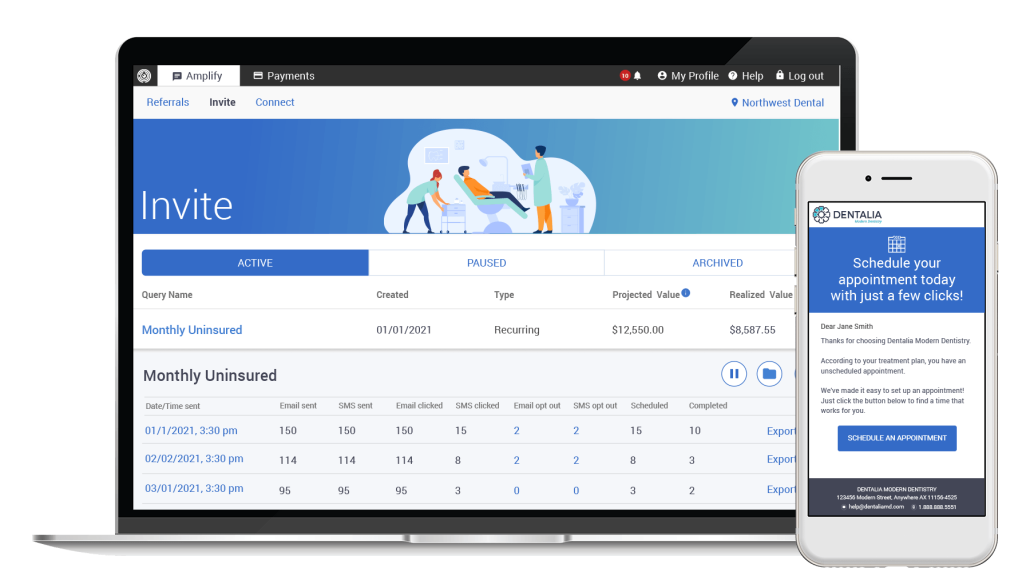Simplify your practice
and accelerate your dental revenue
We’re transforming how practices engage with patients by introducing frictionless workflow to all interactions.
Dental practice revenue accelerated.

IN THE MEDIA: Vyne Dental Acquires Simplifeye
As an industry innovator, Simplifeye creates practice efficiency and a modernized patient experience by transforming how practices process billing and payments. With end-to-end payment tools, the organization additionally delivers optimized user solutions with its chat and direct scheduling features.
The unparalleled pairing with Vyne Trellis®, Vyne Dental’s comprehensive, web-based dental billing platform helping dental practices accelerate their revenue cycles, creates a revolutionary fusion of technologies that will bring innovation to dental billing and payment processing. This acquisition furthers Vyne Dental’s mission of simplifying the process of claims and attachment management and accelerating revenue growth for dental practices.
Payments
End-to-end payment solutions, designed for your practice. Process in-office transactions, send invoices, and create customizable payment plans in a HIPAA-compliant fashion.

Online Scheduling
Secure new patients 24/7 with integrated, fully customizable online scheduling.
Give patients the power to view available openings in real-time and schedule an appointment in a time slot that’s both optimal for them and fully controlled by you.

Live Webchat
With real people trained to answer questions specific to your practice, you can qualify patients and collect important information needed to book an appointment.
Connect with patients 24/7 and capitalize on every opportunity by equipping your website with our Live Webchat feature. Live Webchat can provide answers to patients and allow them to schedule appointments on their time and not just during your office hours.

Campaigns
End-to-end payment solutions, designed for your practice. Process in-office transactions, send invoices, and create customizable payment plans in a HIPAA-compliant fashion.

Meet Vyne Trellis
Vyne Trellis® is an end-to-end revenue acceleration platform for your practice that streamlines claims submission and tracking, provides batch and real-time eligibility of benefits, and provides a secure environment for your communications.
















“I love that the chat is not a canned response. It’s a real person, not a computer program, and the chatters use the customized phrasing we use in the office.”
Cynthia K. Brattesani, DDS
Practice Owner

“I was losing a lot of potential patients because people don’t want to pick up the phone. Now I can capture those patients through chat.”
Yalice M. Cardona, DMD
Practice Owner, Kreative Dental Care

“I tell everyone, you need to be on it. Within six months, we brought in an extra $180,000.”
Gib Snow, DDS
Practice Owner, Snow Orthodontics Schulman Group Member
Let's Get Started
Vyne Dental accelerates the conversion of production to collections with a robust, intelligent exchange which automates electronic transmissions of clean claims, analyzed attachments, eligibilities, payments, patient communications, integrated forms, and secure messaging.

Tackle your insurance battles with confidence!
A solution that simplifies claims processing, attachments, and secure messaging is essential for your practice to run smoothly.




